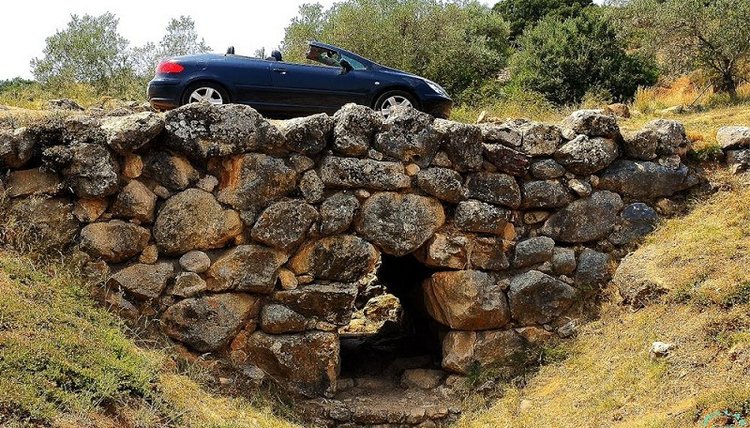Some of the world’s oldest bridges are thought to be the four Mycenaean corbel arch bridges near the Greek villages of Mycenae and Arkadiko. Two of them are still going strong after at least 3,000 years.

All of the bridges are from the same road that connected Mycenae, Tiryns, Tolo, and Epidaurus in the Bronze Age. They all look the same and were built around the same time. They were made between 1300 and 1190 BCE and are thought to be the oldest arch bridges that are still standing. (In Iraq, the 4,000-year-old Bridge of Girsu was only recently found to be a bridge over an old waterway. Before that, people thought that the Mycenaean bridges were the oldest bridges in the world.
The highway and bridges were built with big, irregular blocks of limestone. They were part of a bigger military road system. And those bridges were made to last for a long time. Two of them, the Arkadiko Bridge and the Petrogephyri Bridge, are still in use for farming.
Like the other bridges, the Arkadiko Bridge was built with Cyclopean masonry. This means that large limestone boulders, smaller stones, and small pieces of tile were put together tightly without mortar. Its length is 72 feet, its width is 18 feet, and its height is 13 feet.
The old bridge is still safe for people to walk on, and some locals do use it. But that wasn’t why it was made in the first place. Archaeologists think that the bridge was built for chariots because of the way it looks. Even the curbs that were used to guide horse-drawn vehicles are still there. Yes, it can still stand up to a chariot, even if it’s a modern one.
The other old bridge that is still in use is the Petrogephyri bridge, which is shown below. It crosses the same stream 1 km to the west of Arkadiko bridge. This building is about the same size and shape as the other, but it has a wider span and a higher vault.
In the wider area, at Lykotroupi in northern Argolis, on another Mycenaean main road, there is a fifth, well-preserved Mycenaean bridge. It is almost the same size as Arkadiko Bridge: 5.20 meters (17.1 ft) wide at the bottom, 2.40 meters (7 ft 10 in) wide at the top, and with a corbelled arch span of a little more than a meter. There are still curbs on that road to help guide fast-moving chariots.

Both bridges that still work and the parts of the other two bridges that are still there are important parts of human history. Despite this, none of them have been described or shown in a good way so far. In terms of how it’s built, one of the bridges is in danger, so archaeologists are pushing for safety measures to be put in place.
